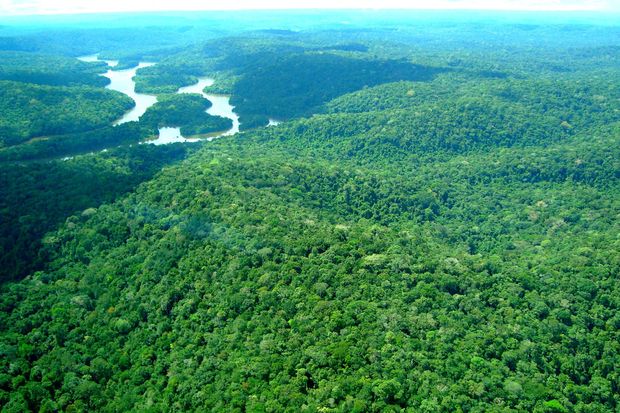Latest Photo Galleries
Brazilian Markets
17h38 Bovespa |
+1,50% | 126.526 |
16h43 Gold |
0,00% | 117 |
17h00 Dollar |
-0,93% | 5,1156 |
16h30 Euro |
+0,49% | 2,65250 |
ADVERTISING
Despite Informal Mining, National Forest Reserve Remains Practically Intact
09/19/2017 - 11h06
Advertising
FABIANO MAISONNAVE
LALO DE ALMEIDA
SPECIAL ENVOYS TO RENCA
Informal miners were caught off guard after the Temer administration decided to extinguish the National Reserve of Copper and Associates (Renca) back in August, extending mineral exploration to the region.
The miners, who are accustomed to a nonexistent state, are now worried that they will be expelled by big mining companies. They are convinced that the decision was not made to regulate their mining activities.
The region remains intact for the most part due to the prevalence of hydraulic mining: a kind of mining whereby high-pressure jets of water are unleashed throughout the forest. After a hole gets busted open, over time, vegetation may begin to take over before becoming a fishing location.
The biggest reserve contemplated by Renca is a state park known as "Flota" - which is in Paru, in the state of Pará. It has an area of 36,000 km2, which is slightly bigger than Holland.
According to a surveillance system implemented by Inpe (National Institute for Space Research) used to monitor deforestation in the Legal Amazon, merely 0.2% of the park has succumbed to deforestation.
One of the reasons that the park is practically intact has to do with the absence of bulldozers which are typically found in other mining locations that are easily accessible, like those in the Tapajós river basin, in eastern Pará.
"It would be reasonable to suppose that, in terms of deforestation, the impact from 2008 [which is when the bulldozers started appearing] onward is greater than the overall deforestation that took place between 1958 [when informal mining in the Tapajós region was first discovered] and 2008", said Mauricio Torres, a social scientist and author of several books about the region.
At the same time, Mr. Torres, who lives in Santarém (Pará), finds that demonizing informal miners is a mistake. "Common sense may tell us that informal mining is a crime while [regular] mining stands for progress and development. Even environmentalist NGOs sometimes adopt that kind of rhetoric. However, the overall damage caused by informal mining in the Tapajós region seems insignificant when compared to catastrophes like the one carried out by Samarco, in Mariana."
Translated by THOMAS MATHEWSON
Read the article in the original language
| Agência Pará | ||
 |
||
| The National Reserve of Copper and Associates (Renca) holds mineral reserves including gold, iron and copper |



